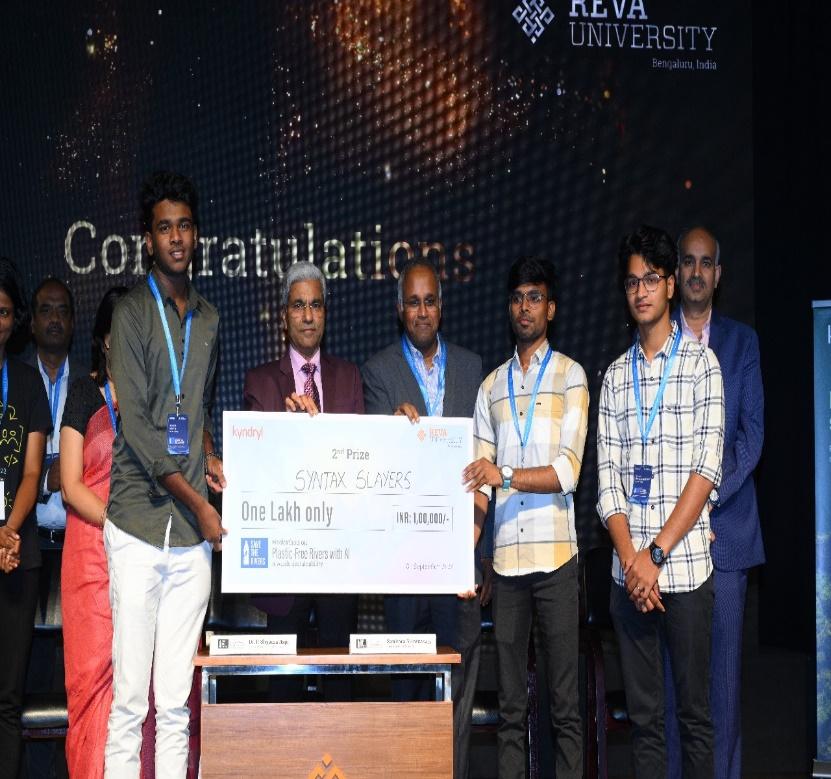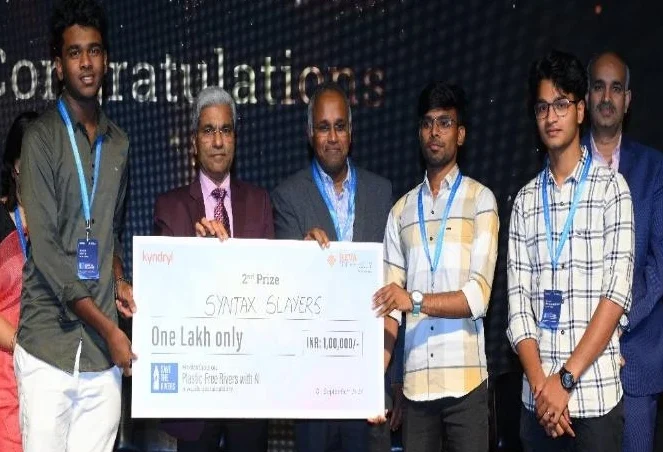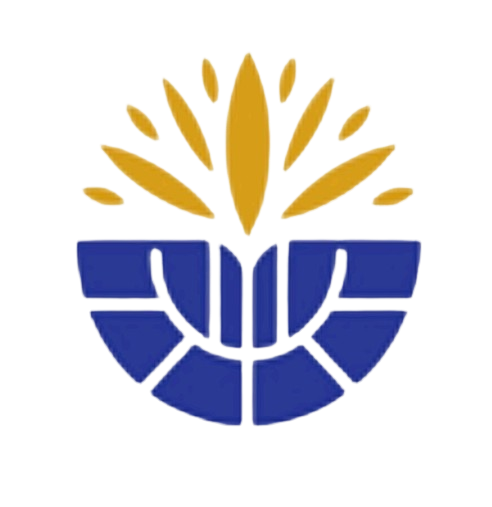Plastic pollution in rivers poses severe threats to ecosystems, freshwater resources, and global ecosystems. To address this, REVA University’s RACE initiative and Kyndryl launched a national-level hackathon aimed at harnessing computer vision and AI for clean-river solutions. With inspiration drawn from Sustainable Development Goals—particularly SDG 6 (Clean Water & Sanitation) and SDG 14 (Life Below Water)—the hackathon ignited technological solutions for real-world environmental challenges.
Scope
- Over 1,300 participants across 750 teams from 19 countries
- Finalist pool narrowed to 15 after three rounds
- Objective: Detect, classify, and geotag plastic debris in drone images—particularly from locations such as Saigon River—using AI pipelines
Grand Finale Highlights
On 8 September, the 15 finalist teams demoed their AI-driven prototypes to a prestigious panel including Dr P. Shyama Raju (Chancellor, REVA), Sankara Srinivasan and Naveen Kamat from Kyndryl, and several AI-ecosystem experts.
Kyndryl and REVA University reaffirmed their shared commitment to sustainability and the UN’s SDGs during the event.

🥈 Team Syntax Slayers: 2nd Prize Winners
Team Members: Rahul G, Mohammed Feroz A., Feron S.
Prize: ₹1,00,000 & 2nd Place
Key Features of their Award-Winning Solution:
- End-to-End AI Pipeline: Efficient detection and segmentation of plastic debris in drone-captured images.
- Geospatial Mapping: Precise GPS tagging to locate hotspots and inform cleanup strategies.
- Community Portal: Interface for NGOs and volunteers to access live dashboards, report findings, and coordinate action.
- Transparency & Accountability: Public dashboards displaying plastic density and cleanup updates.
Their approach not only dazzled the judges technically, but also showcased how AI can empower communities and NGOs in environmental stewardship.
Why It Matters
- Real-World Impact: Uses drone imagery to pinpoint plastic hotspots for targeted cleanup operations.
- Tech Meets Community: Ensures NGOs and local volunteers can engage directly via dashboards and reports.
- Supports UN Goals: Directly aligns with SDG 6 and SDG 14, contributing to cleaner rivers and healthier communities.
- Scalability & Replicability: Frameworks established through this hackathon can be deployed globally across river systems.
Final Thoughts
The “Plastic Free Rivers with AI” hackathon proved that innovation, collaboration, and sustainability can go hand in hand to tackle pressing environmental issues. Congratulations to Rahul, Feroz, and Feron for their stellar performance—and to all participants for proving that when AI is harnessed purposefully, it paves the way for healthier ecosystems and empowered communities.
Interested in exploring the tech stack behind such solutions, or looking for guidance on entering AI-for-environment hackathons? I’m here to help!



